The Poetry of the Cypress
Premise
3D tree modelling is a quite important skill for every architect. Indeed the ability of creating quality in space and handling it consciously is the main task for the professionals. Managing in making it run correctly is what actually defines a good exterior (and why not interior) designer. Trees are just like any other archtiectural element, such as walls, floor planes, projections and so on. Since they especially represent a beauty delivering object by themselves, we must not consider them as mere final instruments for the designing process but as primary elements. If not so, the quality of the space we are forming surely fades away. Trees cast fine shadows, the adjust temperature and humidity, they define space, capture visual forces in they foliage, get the attention for their details.

Choise and Description
Now, let us choose our repesentative tree. As shown above it is clearly the cypress, aka cupressus sempervirens. The name itself reflects its strenghth. It is also called Mediterranean cypress (or Italian cypress, Tuscan cypress, graveyard cypress or pencil pine). Native of the Mediterranean region, it is a medium-sized coniferous evergreen tree, 25 to 35 m tall, with a conic crown and level brenches. The oldest trees can grow up to 45 m. Very long-lived, some trees have been reported to be over 1,000 years old. Its foliage grows in dense sprays and dark green in color. Such foliage is very peculiar and in time various species have been selected and breed for ornamental purposes so to enhance its prerogative. Now different species exist, some have conic crowns, some have piramidal crowns, although often it depends on the way it is trimmed. It is also used in bare and bleak lands as windbreak.
In the international community, cypresses are frequently associated with the italian landscape, particularly Tuscany (in the Italian community as well). They refer to peacefulness, tranquillity and, as obvious, rest. In fact its roots grow down vertically so they do not damage the graves. Over time it has actually been depicted abundantly in drawings that recall such sensations, Van Gogh and many other artists for instance.
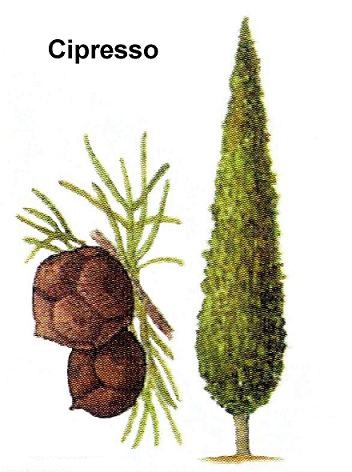
Vasari's Tree Modeling Procedure
The first step consists of opening a new file. Mind that it has not to be a simple template file but a family template file. Do so by clicking on New > Conceptual Mass > Mass.
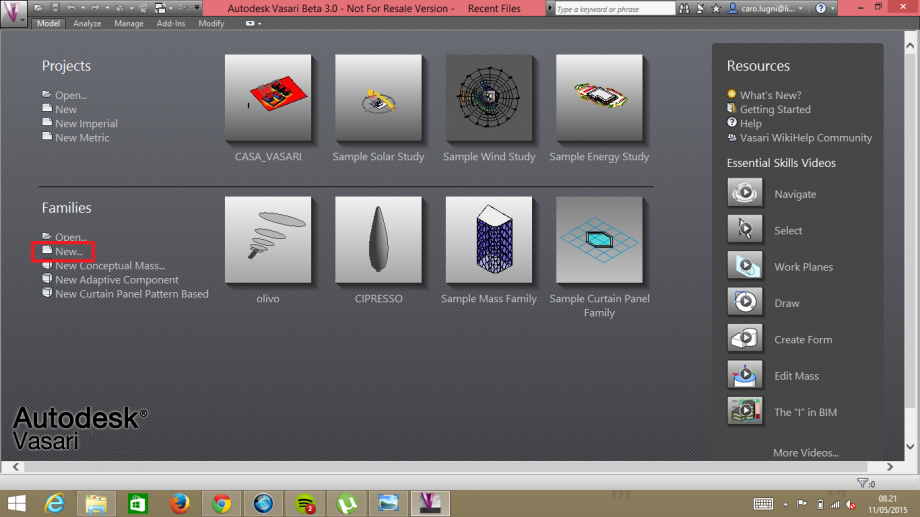


Create the levels. Place them in the right height according to the shape of your tree. Use a picture of your tree as reference, possibly with a axonometric view. Rename the levels in order to make the following steps easier for you. Click on Modify > Levels

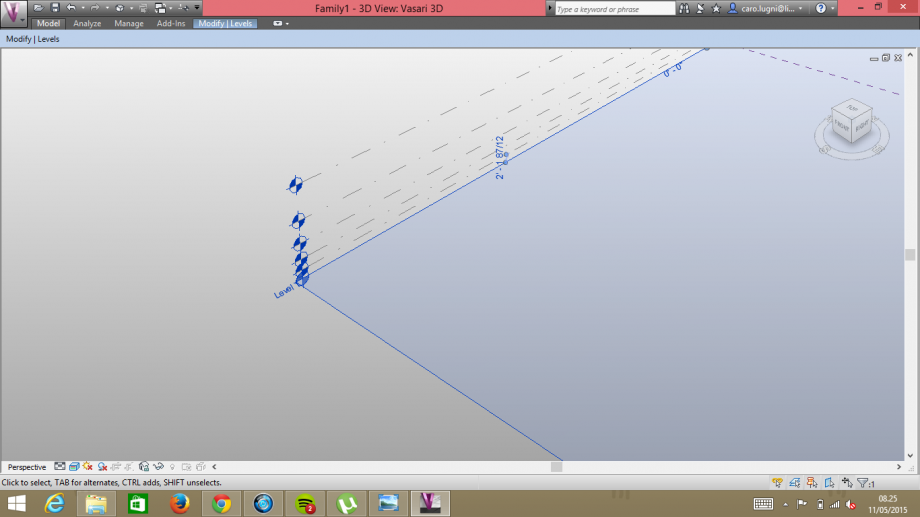
Let's model our tree. Start from bottom to top. Set the right level and draw the section to extrude. In our case we are setting the base of the trunk. Do so by clicking on Modify > Create Form > Solid Form

Once you extrude the form, you can block the last level of the trunk so that if you need to adjust the height of the foliage base you will not end up with a trunk crossing the leaves. If done properly the whole foliage will go up along with the trunk.

Set the planes of the crown on the right levels. Then you can automatically create the volume of the foliage by clicking on Create Form > Solid Form
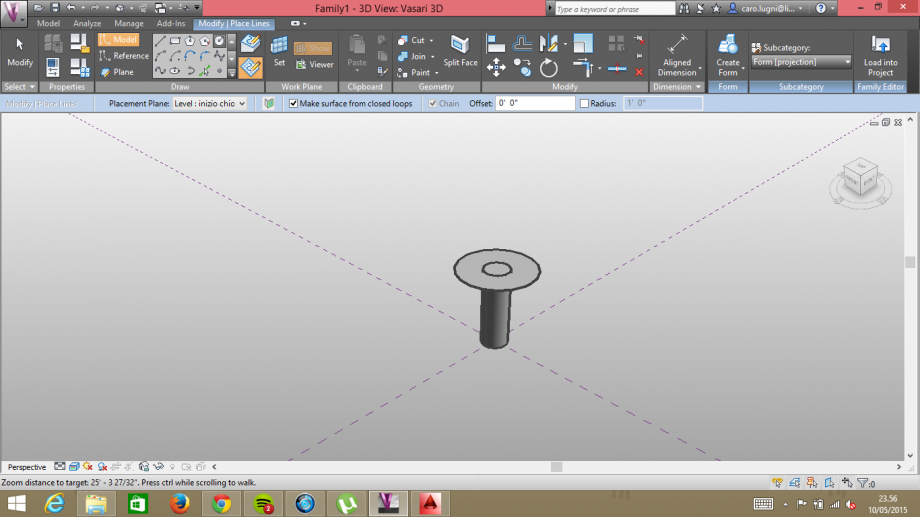

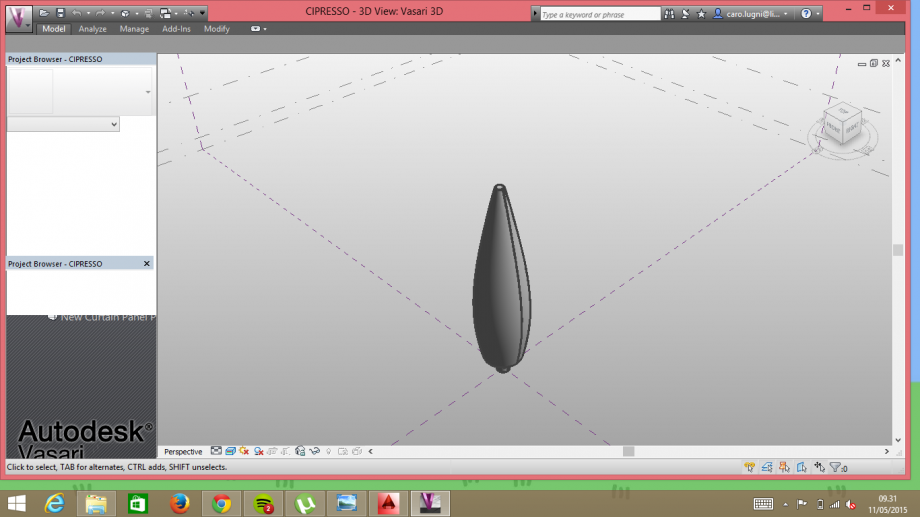
We now wanted to analyze the shadow setting created by a traditional tree arrangment which is the row of cypresses typically seen in the countriside. We did it by copying the tree we previously made along a line, then by copying multiple trees on another line parallel to the first. This is the result.
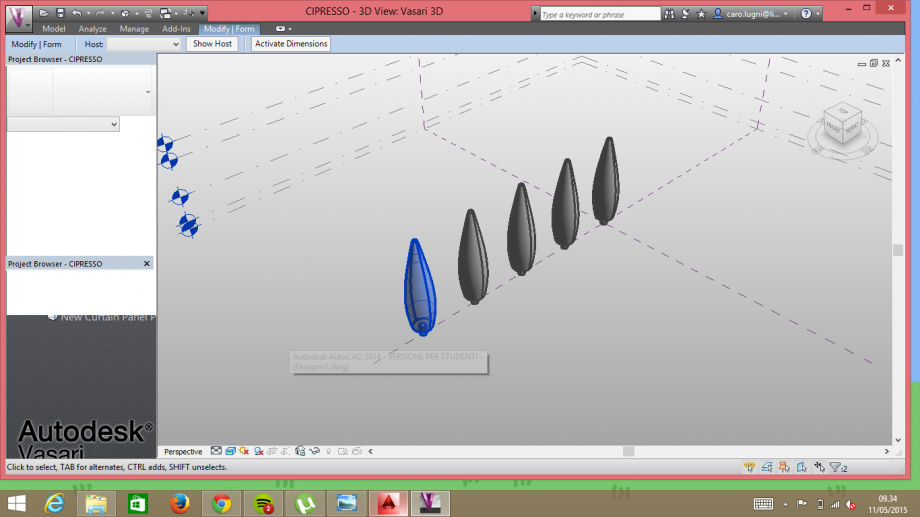

Set the shadows on and the set date and time. The final result is impressive and very similar to the reality. We set 10 a.m. and summertime.
Cypresses are streamlined trees, they define space by creating a precise corridor between them both in terms of space, planes and volume. This makes them ideal for defining walkways and portals. For most of the trees, the shadows on the ground are joined together because their foliages are actually connected one to another once the trees grow older, so that there is no modular definition on the floor (while there is one through space thanks to their trunks). Moreover common trees have very wide crowns, like umbrellas, so during the summer they can protect people from direct sunlight, but on the other hand their shadows have very high impact in wintertime. As for cypresses, they do not represent a valid source of freshness nor sun protection since their trunks are relatively short and the foliage is narrow and low. However they cast wonderful shadows on the ground, and their relationship with the trees creates an interesting game of verticalism and orizontalism and an especially architectural succession of lightness and darkness.
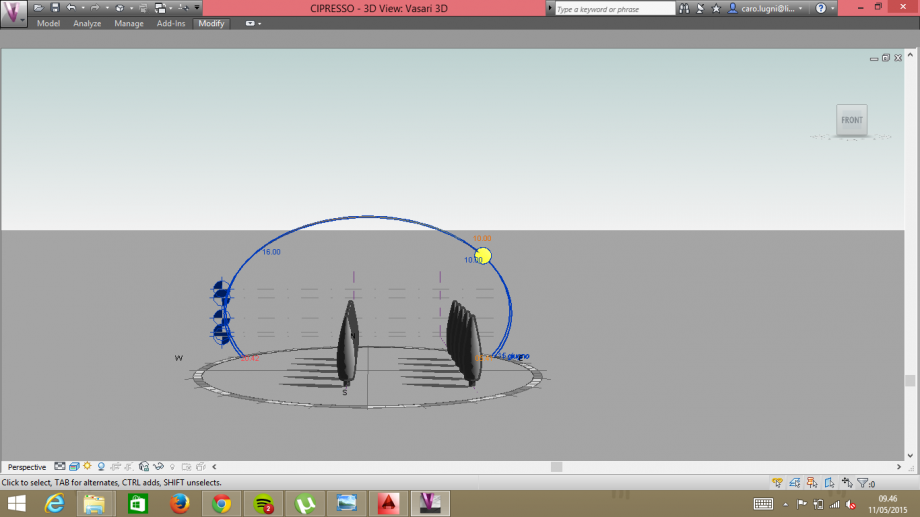
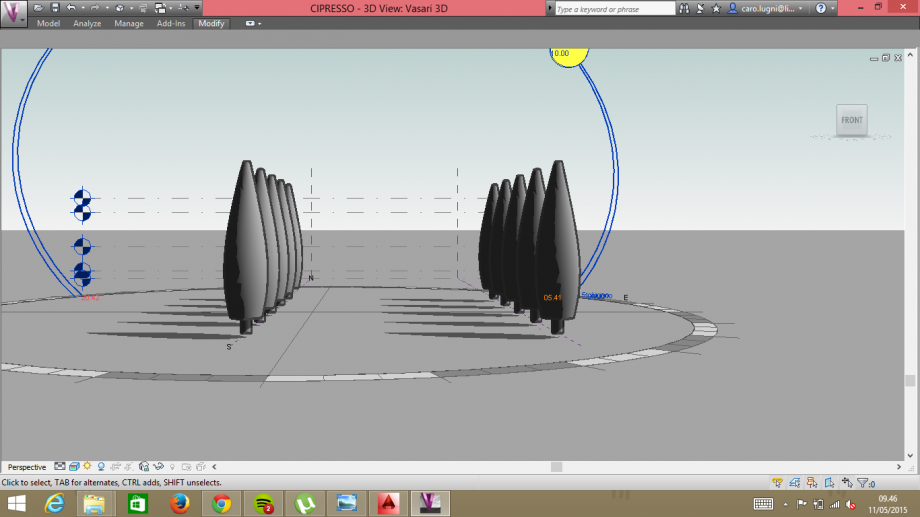




Commenti
Lollobrigida_Lugni
Lun, 11/05/2015 - 18:06
Collegamento permanente
Vasari's Tree Modelling
Vasari's Tree Modelling Procedure Explained
StefanoConverso
Mer, 13/05/2015 - 13:28
Collegamento permanente
Bravi!
Sapreste trovare cipressi a Roma? (Verano escluso!)
Lollobrigida_Lugni
Mer, 13/05/2015 - 18:19
Collegamento permanente
Cipressi a Roma
i promi luoghi che ci vengono in mente sono la chiesa di Santa Maria degli Angeli e dei Martiri1 a Termini e lo stadio Olimpico2 , un tempo chiamato, per l'appunto Stadio dei Cipressi.
Anche l'Appia Antica3 ne è ricca mentre spesso troviamo i cipressi all'interno di parchi delle ville,come ad esempio Villa Torlonia4 in quanto alberi abbastanza "nobili".
Come detto il vantaggio di questi alberi è che le loro radici crescono in verticale e non distruggono le strade cui sono vicini nè disturbano le costruzioni.